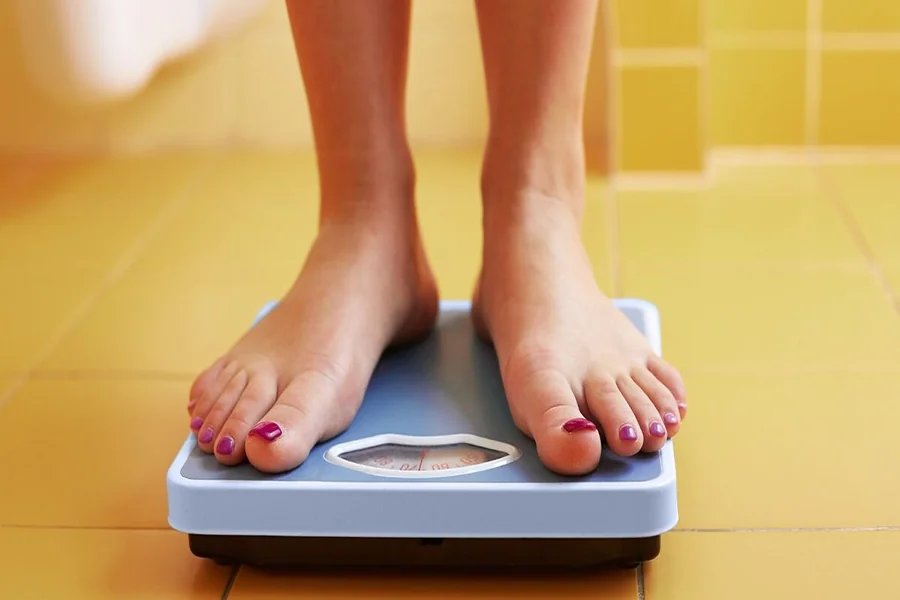The problem with people asking the question, ‘How much should I weigh?’ is that they usually want an answer that is not just a number. Weight is not only about appearance; it also relates to your overall health status, the levels of energy you have, and how your body feels and reacts daily. Not everyone can have the same ideal weight, as it is claimed that our ideal weight depends on factors such as age, height, bone structure, muscle mass, and even gender. One of the best tools to begin exploring your healthy weight range is a height weight chart female reference. These charts will provide a rough idea of the upper and lower weight limits that appear to be healthy for your height.
In this article, we’ll explore how to determine a healthy weight, what factors play a role, and how a height weight chart female can be used wisely—not obsessively. You will also find other information, including guidance on how to utilize the numbers, as well as individual interpretation and improved lifestyle choices that can enhance your long-term wellness plans.
Understand Ideal Weight
Ideal weight is not a definite target, but rather a range. Your lifestyle, body composition, and genetic makeup all contribute to determining your healthy weight range. Many women often compare themselves with unrealistic media standards, but a more scientific way is to rely on BMI and body composition metrics or start by checking a height weight chart female to understand your ideal range.
A height weight chart female shows a healthy weight range for each height. Such charts are commonly created using categories of BMI, such as underweight, normal, overweight, and obese. An example of this is a person who is 5 feet 4 inches tall, for whom the ideal weight range would be between 110 and 140 pounds. However, this is merely a reference that athletic women or those with a high level of musculature are allowed to be heavier and yet remain in very good health.
This is a typical height and weight chart for females, based on average BMI standards (Body Mass Index 18.5-24.9) with a medium body frame. It serves as a general guide, as everyone’s health and body composition is unique.
Height Weight Chart Female
| Height (feet & inches) | Height (cm) | Healthy Weight Range (kg) | Healthy Weight Range (lbs) |
| 4’10” | 147 cm | 41 – 52 kg | 90 – 115 lbs |
| 4’11” | 150 cm | 43 – 54 kg | 94 – 119 lbs |
| 5’0″ | 152 cm | 45 – 56 kg | 99 – 123 lbs |
| 5’1″ | 155 cm | 47 – 58 kg | 103 – 127 lbs |
| 5’2″ | 157 cm | 48 – 59 kg | 106 – 130 lbs |
| 5’3″ | 160 cm | 49 – 61 kg | 108 – 134 lbs |
| 5’4″ | 163 cm | 50 – 63 kg | 111 – 138 lbs |
| 5’5″ | 165 cm | 52 – 65 kg | 114 – 143 lbs |
| 5’6″ | 168 cm | 53 – 67 kg | 117 – 147 lbs |
| 5’7″ | 170 cm | 55 – 69 kg | 121 – 152 lbs |
| 5’8″ | 173 cm | 56 – 70 kg | 123 – 154 lbs |
| 5’9″ | 175 cm | 58 – 72 kg | 127 – 159 lbs |
| 5’10” | 178 cm | 59 – 74 kg | 130 – 163 lbs |
| 5’11” | 180 cm | 61 – 76 kg | 134 – 168 lbs |
| 6’0″ | 183 cm | 63 – 78 kg | 139 – 172 lbs |
Notes:
- This height weight chart female uses the healthy BMI range of 18.5–24.9.
- In case you do not have a large body structure, your optimal weight could be on the smaller side of the chart.
- When you are big boned or muscular, your healthy weight may be on the upper side.
- Always consult a healthcare provider for personalized recommendations.
Role of BMI and Body Composition
A frequently used instrument to measure weight is the Body Mass Index (BMI). This figure is based on your height and weight and is classified as either underweight, normal, overweight, or obese. Although it is useful, it does not accurately measure muscle mass or fat percentage. That’s why a height weight chart female is a better visual guide for quick assessments, but it should always be used alongside other health indicators.
For example, two females might have equal weight and height; however, one might be more muscular and the other might have more body fat. The height weight chart female doesn’t differentiate between these types of bodies, so it’s important to understand that weight alone doesn’t tell the full story.
Why Height Matters
The height is a compulsory parameter in determining what a healthy weight range should look like for you. Taller persons possess more massive bones, muscles, and organs, to be exact, and hence weigh more. That’s why the height weight chart female includes height as the key variable and pairs it with appropriate weight ranges to guide health assessments.
One of the common mistakes humans make is comparing themselves to individuals who are shorter or taller, and concluding that they are too fat or too thin. The height weight chart female keeps the focus on your own structure, giving a more accurate benchmark that aligns with your frame.
Age and Hormonal Influence
During the aging process, weight is influenced by factors such as hormones, metabolism, and lifestyle changes. During the adolescent stage of life, the body stores fat to aid in growth and reproduction. During adulthood, the weight distribution shifts, and in many cases, metabolism slows down. Additionally, menopause can cause the body to store more fat in the abdominal area.
This is why a height weight chart female should be used flexibly. A weight that was best in your 20s may not be possible or even needed in your 40s. And it is not the lowest weight that one can achieve, but rather being at the healthiest weight for your age and life stage.
Using the Chart the Right Way
A height weight chart female is not a judgment tool—it’s a starting point. This guide is intended to help you achieve a weight that promotes energy, mobility, and overall wellness. When you are significantly outside the recommended range, it may be time to adjust your behavior or consult with a healthcare professional.
Also, avoid checking the chart obsessively. The goal isn’t perfection but consistency and balance. You should never feel ashamed of where you stand on the height weight chart female. Rather, make it a guide or a marker in a checklist that you use to make decisions about what to eat, work out, or take care of yourself.
Focus on Fitness, Not Just Weight
An excessive emphasis on weight may instill rather unhealthy habits. It is also advisable to make a shift towards being strong, having stamina, and maintaining overall fitness. Exercise regularly, eat mindfully, and hydrate. When your lifestyle is healthy, your body often adjusts naturally to a weight that suits you best—one that will likely fall within the height weight chart female guidelines.
The body is composed of muscle, which is thicker than fat. Hence, an active person may have a higher weight than anticipated. That’s completely normal. Don’t aim for a number just because the height-weight chart for females suggests it; aim to feel energized and strong every day.
Emotional Health and Body Image
The connection you have with caring for your body is equally significant compared to your actual weight. Expectations and pressures from society, the media, and comparisons with peers may result in lower self-esteem, particularly when weight is considered the sole and primary indicator of value.
Rather than trying to pursue a figure on the scale, aim at loving your body at any given phase. Even as you use tools like the height weight chart female, remind yourself that health looks different on everyone. You are on your own path, and the weight that is comfortable and healthy for you is the person who will not compromise your physical and emotional well-being.
When to Consult a Professional
When you are uncertain about where you stand on the health continuum regarding weight or whether you should be concerned about new developments, seek the assistance of a healthcare practitioner or a registered dietitian. They can assess your overall health—not just your place on the height weight chart female—and guide you with evidence-based recommendations tailored for your body type and lifestyle.
Unexpected weight gain or loss may, in some cases, be attributed to natural causes, such as health complications, thyroid conditions, hormonal disorders, or even stress-induced eating. The professionals help you move beyond the chart and see real solutions.
Conclusion
Weight is a very intimate thing, but it must not give rise to shame or burnout. Understanding your healthy range is helpful, and the height weight chart female can be a valuable guide. But remember, it’s only one part of the puzzle. The best weight is the one at which you feel strong, confident, and energized, rather than light on the scale.
Strive for balance, not extremes. Use the height weight chart female as a tool—not a rule. And most importantly, you should respect your body and all the things that it does daily.
FAQs
What is a healthy weight for a 5’5″ female?
According to a typical height weight chart female, a healthy weight for someone 5’5″ falls between 114 to 144 pounds, depending on body composition and frame size.
Is the height weight chart female accurate for everyone?
It provides a general guideline, but individual health varies based on factors such as muscle mass, bone density, and others. It should be used in conjunction with medical advice.
Can I be overweight on the chart but still be healthy?
Yes, athletes and fit individuals with high muscle mass may fall into a higher weight category, but they can still be in excellent health.
How often should I check the height weight chart female?
It’s not something you need to check regularly. Use it as a reference when making lifestyle changes or assessing your wellness goals.
Does age affect the ideal weight on the chart?
While the height weight chart female doesn’t factor in age, your weight needs can shift over time due to hormonal changes and metabolism.


